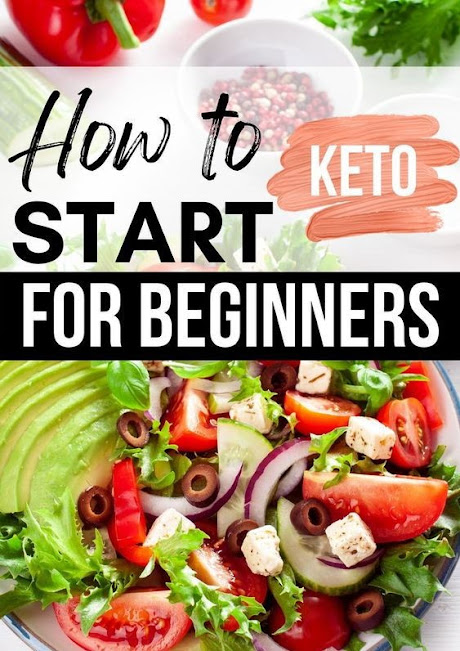Introduction
Are you considering starting a ketogenic diet but unsure where to begin? Look no further! This blog post provides a step-by-step guide on how to kickstart your ketogenic journey, using a straightforward and simple approach. Discover the secrets to entering the state of ketosis and achieving your health and weight loss goals.
1: Understanding the Ketogenic Diet
Introduction:
Before diving into the practical steps, it's important to grasp the fundamentals of the ketogenic diet. This low-carb, high-fat eating plan is designed to shift your body into a state of ketosis, where it primarily burns fat for fuel instead of carbohydrates. This metabolic state offers numerous benefits, including weight loss, improved mental clarity, and increased energy levels.2: Step-by-Step Guide to Starting a Ketogenic Diet
Educate Yourself:
Begin by gathering knowledge about the ketogenic diet. Understand the science behind it, its potential benefits, and the foods you can eat. Several reputable resources, such as books, websites, and professional opinions, can provide valuable insights to empower you on your journey.Set Goals:
Define your goals before embarking on any dietary change. Whether you aim to lose weight, improve your overall health, or manage a specific health condition, setting clear objectives will keep you motivated and focused throughout your ketogenic journey.Clean Out Your Pantry:
To eliminate temptation, remove high-carb and processed foods from your pantry and refrigerator. Donate or discard items that don't align with your new eating plan. Instead, stock up on low-carb, high-fat foods such as avocados, nuts, seeds, fatty meats, and leafy greens.Plan Your Meals:
Meal planning is crucial when starting a ketogenic diet. Design a weekly menu that includes a variety of healthy fats, moderate protein, and low-carb vegetables. This approach ensures you stay within the appropriate macronutrient ratios.Calculate Your Macros:
Determining your macronutrient requirements is essential for a successful ketogenic diet. Use online calculators or consult with a nutritionist to establish your daily targets for carbohydrates, protein, and fat intake. Tracking your macros will help you maintain ketosis and achieve your desired outcomes.Gradually Reduce Carbohydrate Intake:
Transitioning to a low-carb diet can be challenging for some. Instead of cutting out carbs abruptly, gradually reduce your carbohydrate intake over a week or two. This approach allows your body to adjust more smoothly.Increase Healthy Fat Intake:
Replace the energy from carbohydrates with healthy fats like avocados, coconut oil, olive oil, and nuts. Incorporate these fats into your meals to promote satiety and support ketone production.Monitor Protein Consumption:
While protein is an essential nutrient, excessive intake can hinder ketosis. Be mindful of your protein portions and opt for moderate consumption. High-quality sources include eggs, fish, poultry, and grass-fed meats.Stay Hydrated:
Proper hydration is crucial during a ketogenic diet. Aim to drink sufficient water to support your body's functions and avoid dehydration. Additionally, replenish electrolytes through foods rich in sodium, potassium, and magnesium or consider using supplements.Monitor and Adjust:
Regularly monitor your progress, energy levels, and how your body responds to the diet. Keep a food diary or use mobile apps to track your meals, weight, and other relevant metrics. Based on your observations, make necessary adjustments to optimize your ketogenic experience.
1: Planning Your Meals for the Week
To begin your keto meal plan, it's helpful to plan your meals for the entire week. Start by creating a list of keto-friendly foods you enjoy and are readily available. Focus on incorporating a variety of healthy fats, such as avocados, nuts, seeds, coconut oil, and olive oil. Choose protein sources like eggs, poultry, fish, and grass-fed meats. For vegetables, opt for low-carb options like leafy greens, cauliflower, broccoli, and zucchini. Finally, consider adding small portions of low-sugar fruits and dairy products, such as berries and full-fat cheese, if they fit within your daily carbohydrate limit.
2: Structuring Your Meals
Once you have your list of keto-friendly foods, it's time to structure your meals. Aim to have three meals a day and, if needed, add snacks in between. Each meal should consist of a balance of healthy fats, protein, and low-carb vegetables. For example, a typical keto meal could include grilled chicken thighs cooked in olive oil, a side of sautéed spinach with garlic, and a generous serving of sliced avocado. Be creative and experiment with different recipes to keep your meals interesting and satisfying.
3: Meal Prepping and Batch Cooking
To make sticking to your meal plan easier, consider incorporating meal prepping and batch cooking into your routine. Set aside a designated time each week to prepare your meals in advance. Chop vegetables, marinate meats, and portion out snacks for the week. Having pre-prepared meals on hand not only saves time but also reduces the chances of making impulsive food choices that may derail your progress. Invest in some storage containers to keep your meals organized and easily accessible throughout the week.
Conclusion:
Creating a well-thought-out meal plan is key to successfully adopting a keto lifestyle. By understanding the basics of the ketogenic diet, determining your daily macronutrient goals, and planning your meals for the week, you can ensure you're on the right track from the beginning. Remember to structure your meals with a balance of healthy fats, protein, and low-carb vegetables, and consider incorporating meal prepping and batch cooking to make your keto journey more convenient and sustainable. With a solid meal plan in place, you'll be well-equipped to navigate the world of keto and achieve your health and wellness goals.


Comments
Post a Comment